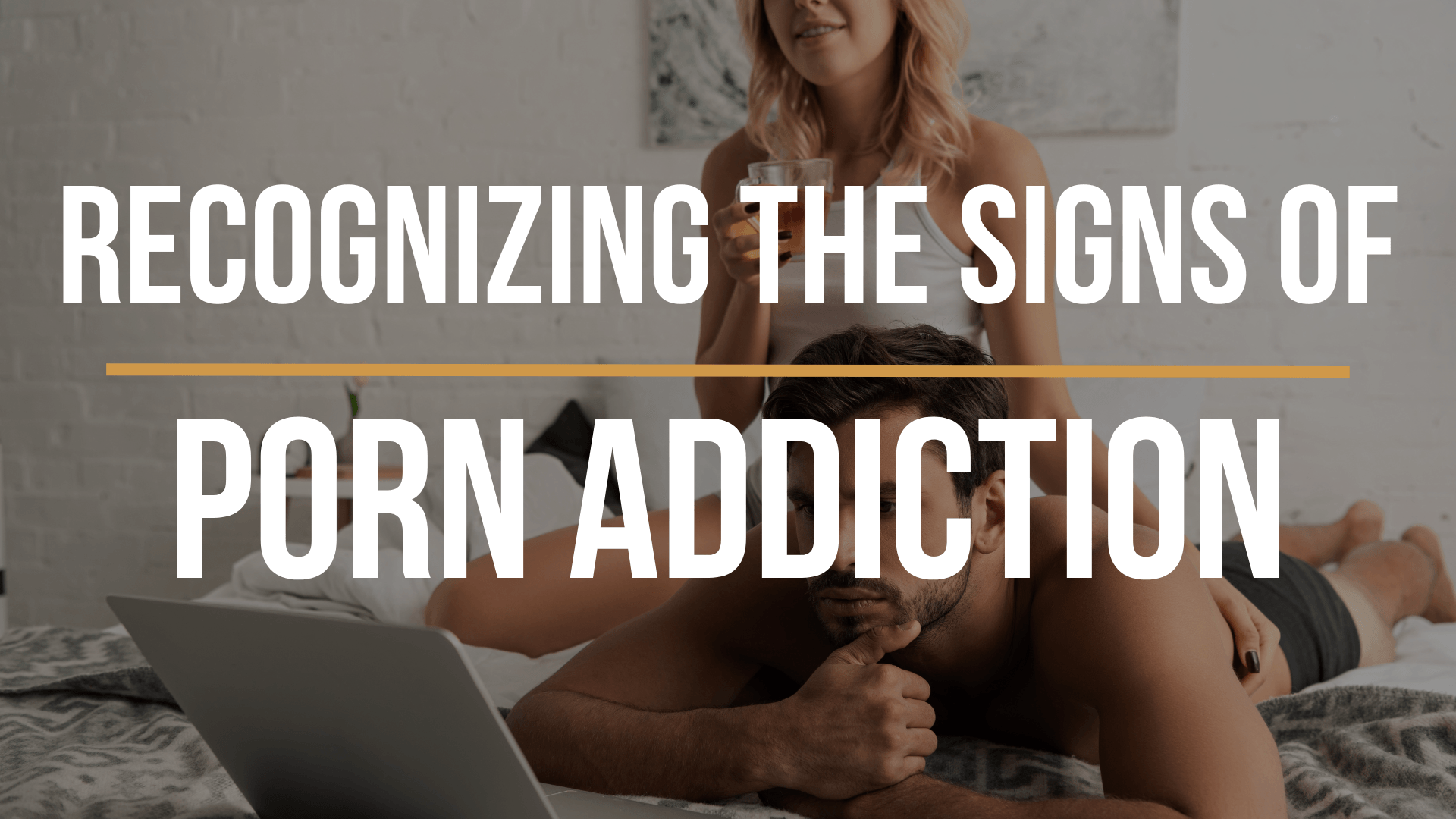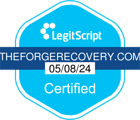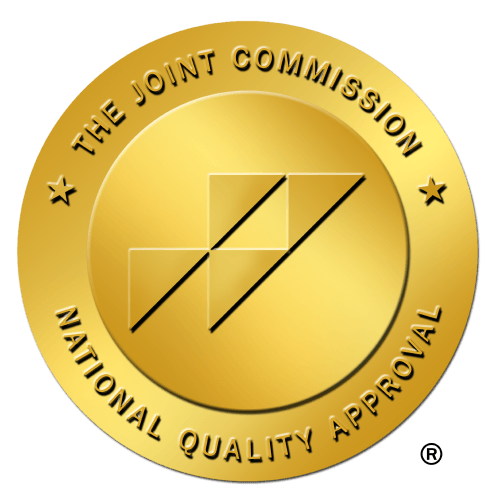Recognizing the Signs of Porn Addiction


Learn the signs of porn addiction, its impact on life, and how to seek help, as well as the benefits of early intervention.
The internet’s allure of instant gratification has led many down a path of compulsive behaviors, with porn addiction emerging as a significant concern. This addiction, much like substance abuse, can dominate an individual’s life, leading to severe personal and professional consequences.
Understanding the fine line between casual use and addiction is crucial, as the latter often results in an overwhelming preoccupation with sexual content, disrupting daily activities and relationships. Learn how to recognize the signs of porn addiction, and contact us if you or a loved one require help with recovery.
What Is Porn Addiction?
Porn addiction is characterized as a compulsive behavior where individuals feel an uncontrollable urge to view pornographic content, despite any negative consequences it may bring to their personal or professional lives. This form of addiction, much like substance abuse, involves the repeated engagement in viewing pornography to the extent that it dominates the addict's life.
Differentiating Between Normal Usage and Addiction
While many individuals view pornography as a harmless and occasional act, the line into addiction is crossed when the behavior becomes a critical need. Unlike casual or moderate use, porn addiction often leads to an intense preoccupation with sexual content, which can end up dictating one's daily activities and priorities. Here are the key differences between recreational and addictive use:
Frequency and Intensity: Normal usage doesn't interfere with everyday responsibilities, whereas addiction takes precedence over one’s duties and relationships.
Impact on Life: Casual use remains a part of a balanced life; addiction disrupts and derails it.
Control: Those with a healthy approach to pornography can set limits and adhere to them. In contrast, addicts find themselves unable to control the urge to watch porn, even when they actively wish to stop.
Psychological and Physiological Aspects
Psychologically, porn addiction can stem from a need to escape from stress, emotional discomfort, or low self-esteem. It often serves as a temporary relief or distraction, but over time, the dependence deepens, and the psychological need becomes more pronounced. Common psychological effects include anxiety, depression, and social withdrawal.
Physiologically, watching pornography can trigger the release of dopamine, a neurotransmitter associated with pleasure and reward. This release reinforces the behavior, making the brain crave more frequent and intense stimulation to achieve similar effects. Over time, this can alter brain chemistry, leading to changes in the brain similar to those seen in drug addiction. This neurological impact explains why overcoming porn addiction can be particularly challenging and often requires professional intervention.
Porn Addiction Signs
Recognizing the signs and symptoms of porn addiction is necessary for early intervention and seeking help. While sometimes seeing porn is common, it becomes an addiction when it starts to negatively impact a person's life and develops into a compulsive habit. The following are usual signs and porn addiction symptoms:
Loss of Control
Porn addicts frequently find it difficult to limit the amount of time they spend watching porn. They could discover they keep breaking their commitments to reduce or stop entirely.
Escalation
As addiction worsens, people could go for more intense or graphic types of pornography for the same rush or satisfaction. This escalation can lead to desensitization to milder content.
Neglecting Responsibilities
One of the most noticeable signs is neglecting essential responsibilities in favor of porn consumption. This might involve putting off tasks for work or school, skipping deadlines, or putting off chores at home.
Isolation
People with a porn addiction may withdraw from their friends, families, and social interactions. Relationships may get strained due to their preference for spending time alone watching porn.
Increased Time Consumption
An obvious sign is excessive pornographic viewing time. It can interfere with daily activities, including sleeping, eating, working, or studying, and may lower productivity.
Preoccupation
When someone has a pornographic obsession, they may find it challenging to focus on other obligations or chores because they are always thinking about when and where they will view it next.
Neglect of Interests and Hobbies
Taking part in once-pleasant hobbies, interests, or activities may become less critical as porn consumption becomes the primary source of enjoyment and relaxation.
Attempts to Quit That Fail
People addicted to porn may make several unsuccessful attempts to stop using it or reduce it. When attempting to stop, they may experience withdrawal symptoms, such as irritability, restlessness, and heightened cravings.
Decline in Relationships
Pornography addiction may harm close relationships. Pornography may take priority over romantic relationships sometimes, resulting in a lack of emotional and physical intimacy.
Mood Swings
Frequent mood swings, including anxiety, depression, guilt, or shame, can result from porn addiction. These emotional fluctuations can negatively impact overall mental health.
Loss of Interest in Real Sex
Some individuals may lose interest or experience difficulty in real sexual encounters due to their reliance on pornography for sexual stimulation.
Secretive Behavior
People with a porn addiction often hide their consumption habits, feeling ashamed or guilty about their behavior. They may clear browsing histories, use private modes, or delete downloaded content to conceal their actions.
Are You Struggling with Mental Health or Addiction?
We Can Help. Call Us Now!
CALL: 877-839-1772
Why Recognizing Porn Addiction Signs Matters
Identifying the signs of porn addiction is not just about pointing out a problem — it’s about initiating the healing process. By knowing the signs, you can help mitigate the addiction’s impact and streamline recovery efforts for either yourself or a loved one.
Early Intervention Benefits
The sooner porn addiction is identified, the more effective the intervention can be. Early action prevents the behavior from becoming a severe compulsion, simplifies the recovery process, and decreases the likelihood of relapse. This timely response also protects mental health and preserves important personal and professional relationships, which are often jeopardized by addiction.
Prevention of Further Psychological and Relational Damage
Without recognition and intervention, porn addiction can cause significant psychological distress, such as increased anxiety, depression, and a severe hit to self-esteem.
Relationally, it leads to trust issues and communication breakdowns, threatening important personal connections. Early detection helps halt these negative spirals, protecting both the individual’s mental well-being and their relationships.
The Role of Awareness in the Recovery Process
Awareness plays a transformative role in overcoming porn addiction. It not only enlightens the individual about the severity and implications of their addiction but also engages them in the recovery process actively.
With increased awareness, affected individuals are more likely to seek necessary support and resources, and their loved ones are better equipped to provide meaningful support. This collective awareness and action facilitate a supportive recovery environment, crucial for long-term success.
What Are The Causes Of Porn Addiction?
Like other addictions, porn addiction is a complicated problem impacted by several variables. Although some people who watch porn will get addicted, not everyone does, and the reasons might differ from person to person. However, several common factors can contribute to the development of porn addiction:
Biological Factors
Some people can be biologically prone to addiction. Certain individuals may be more vulnerable to developing addictive behaviors due to specific brain and neurotransmitter mechanisms.
Psychological Factors
Psychological factors play a significant role in addiction. Porn addiction can be a coping mechanism for anxiety, depression, stress, or other emotional problems. Some people may turn to pornography to escape emotional suffering or dissatisfaction.
Early Exposure
Early exposure to pornography can raise the chance of addiction. Suppose children or teenagers are exposed to explicit material before they are emotionally mature enough to understand it. In that case, they may be more likely to become addicted.
Cultural and Social Factors
An individual's relationship with pornography can be influenced by societal and cultural standards on sexuality. People may experience greater shame and guilt about seeing pornography in communities where it is prohibited or seen poorly. This might lead to addictive behaviors as a coping mechanism for these feelings.
Easy Accessibility
Since explicit content is easily accessible online, it is easier for people to consume excessive amounts of pornography. The development of addiction may be influenced by the ease of access.
Peer Influence
Peer pressure and social influences can play a role in the initiation of pornography consumption and, in some cases, the development of addiction. Suppose someone's social circle promotes or normalizes porn use. In that case, they may be more likely to develop a problematic relationship with it.
Relationship Issues
Conflict or dissatisfaction within intimate relationships can lead some individuals to turn to pornography as an outlet for sexual fulfillment or emotional connection, eventually leading to addictive behaviors.
Lack of Healthy Coping Strategies
People who lack healthy coping strategies for dealing with life's challenges may turn to pornography to escape or self-soothe. This reliance on pornography can escalate into addiction.
Genetic Factors
While still being researched, some evidence suggests that certain genetic factors may predispose individuals to addiction, including porn addiction.
Are You Struggling with Mental Health or Addiction?
We Can Help. Call Us Now!
CALL: 877-839-1772
Porn Addiction Treatment
For those who want to regain control over their life and enhance their well-being, porn addiction support is essential. Treatment for porn addiction can take many different forms, and the method chosen should be based on the requirements and circumstances of the patient. The following are some typical aspects of a porn addiction treatment:
Therapy and Counseling
Cognitive-behavioral therapy (CBT): CBT helps individuals identify and change the negative thought patterns and behaviors associated with porn addiction. It teaches coping skills and strategies to resist urges.
Individual Therapy: One-on-one sessions with a therapist can provide a safe space for discussing underlying issues and triggers contributing to addiction.
Group Therapy: Group therapy allows individuals with similar experiences to share and support one another in their recovery journey. It can help reduce feelings of isolation.
Knowledge and Awareness
To help people better understand their addiction, educate them on the nature of addiction, how it affects the brain, and the effects of excessive pornography use.
Support Groups
Joining support organizations, such as 12-step programs or online discussion forums, may provide continuing motivation and a feeling of connection with others going through the same struggles.
Family Therapy
Family therapy can help mend and strengthen strained family ties in situations where addiction has been the cause.
Relapse Prevention Strategies
A key component of treatment is teaching individuals how to recognize relapse triggers and create relapse prevention plans. People are advised on how to deal with urges and difficult situations without turning to porn.
Healthy Coping Mechanisms
Encouraging the development of healthy coping mechanisms for dealing with stress, anxiety, and other emotional issues is necessary. Exercise, mindfulness training, meditation, and artistic activities are a few examples.
Wellness and Self-Care
Recovery can be facilitated by prioritizing general well-being via self-care routines, including getting enough rest, eating a balanced diet, and exercising frequently.
Technology Management
It may be possible to lessen the desire to view porn by restricting or regulating access to the internet and devices. Apps and software resources are offered for this purpose.
Medication (in some Cases)
Medication may sometimes be prescribed to treat co-occurring mental health issues that fuel addiction, such as depression or anxiety.
Accountability Partners
An accountability partner, such as a close friend or family member, can provide additional support and motivation in the recovery process.
Closing Thoughts: The Signs of Porn Addiction
Porn addiction is a serious issue that can disrupt lives, relationships, and mental health. Recognizing the signs, such as loss of control, escalation, and neglect of responsibilities, is crucial for early intervention.
Understanding the psychological and physiological aspects of this addiction can help in addressing it effectively. If you or a loved one is struggling with porn addiction, remember that you’re not alone, and help is available at The Forge Recovery Center.
Are You Struggling with Mental Health or Addiction?
We Can Help. Call Us Now!
CALL: 877-839-1772
Moving Forward with Support
At The Forge Recovery Center, our team of mental health professionals offers a range of therapies designed to guide you toward recovery. We provide a welcoming community of peers and staff members dedicated to supporting your journey. Call us today if you or someone you know needs professional support.
Are You Struggling with Mental Health or Addiction?
We Can Help. Call Us Now!
CALL: 877-839-1772




